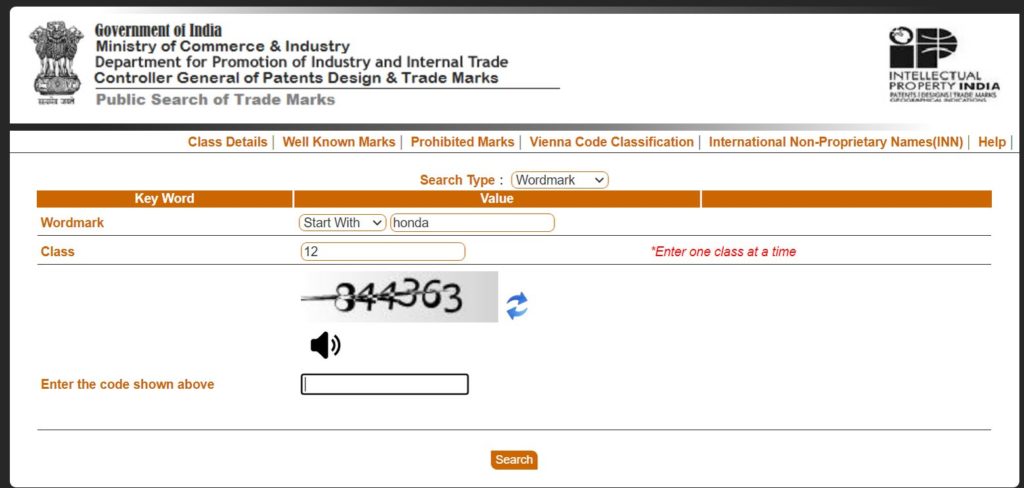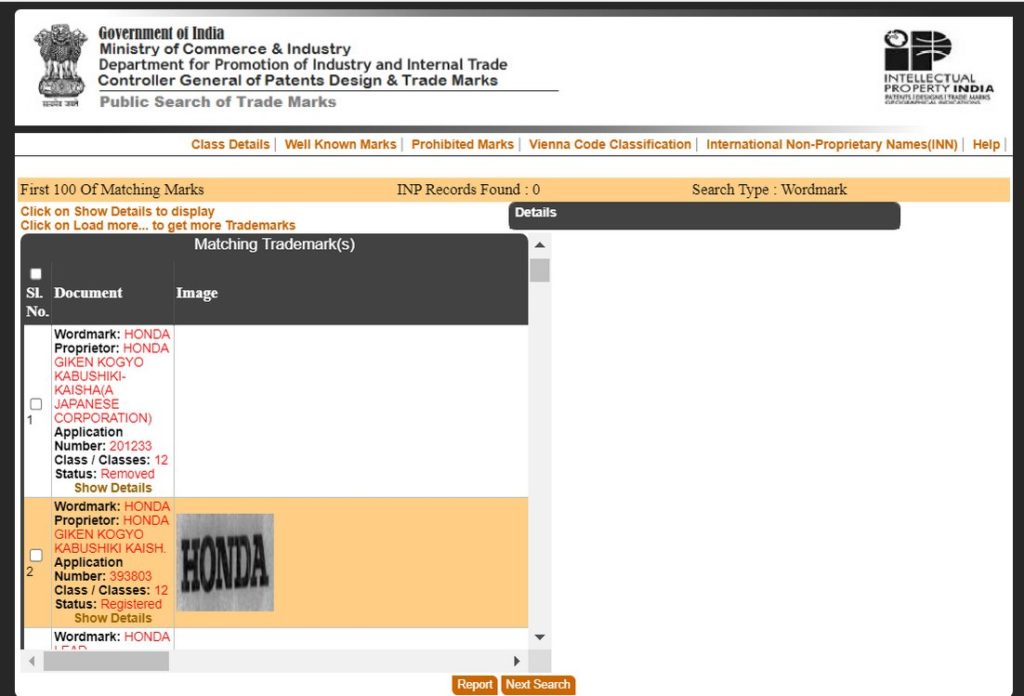Zatapult

A trademark is a word, phrase, symbol, or design that helps the consumers to distinguish the source of the goods or services of one party/organisation from that of others.
Under the Trademark Act, 1999 (“Act”), trademark is defined as, “a mark capable of being represented graphically and which is capable of distinguishing the goods or services of one person from those of others and may include the shape of goods, their packaging and combination of colours.” Such a mark also includes various aspects such as, names, headings, labels, signatures and so on.
Protection of trademarks in India is governed by the Act and it includes registration, common law rights to use, and prevention of fraudulent use of trademarks. Any new use or registration of a trademark involves a series of carefully planned procedures as part of the brand owner’s diligence exercise. This begins with allocation of classes for the goods or services provided by the proprietor and then conducting market enquiries and searching for availability or registrability of the proposed name or trademark in those particular classes in the records of the Registry.
Features of a strong Trademark
Proper planning while selecting a trademark is of utmost importance as a strong trademark will not invite objections from the Examiner of trademarks, third party oppositions or conflicts from the general public. Before registering a trademark, certain things should be kept in mind vis-à-vis the proposed trademark. They can be briefly stated as follows:
Inherent Distinctiveness
Strong trademarks or inherently distinctive marks are made up of phrases or symbols that are unrelated to the goods or service that they are meant to represent. Marks that are arbitrary or fanciful (coined) are easier to protect and unique in nature. Examples of inherently distinctive marks are: KODAK for cameras, GOOGLE for internet search engine, and APPLE for electronics products.
When a trademark proposed to be used is inherently distinctive and unique, a trademark availability search may yield less similar or identical trademarks. Having a unique and a distinctive trademark is essential for it to be registered without inviting any oppositions from the Examiner or the general public. However, even if your trademark is presumed to be unique and distinctive, the process of searching for the availability of a trademark should not be skipped. The search process mitigates the risks of third-party trademark infringement in the future.
Registrability
The trademark must fulfil certain prerequisites in order to be registered with the Trademark Registry. This includes being not generic, not descriptive and not conflicting with existing marks or registrations.
To ensure that your trademark is capable of being registered, a person desiring to get his trademark registered should conduct a trademark availability search. By doing so, one can understand possible trends with respect to common or generic words or logos as well as check if the proposed trademark is conflicting or similar to any of the registered trademarks.
Trademark Availability Search
What is a trademark availability search?
A trademark search is a search carried out in the registry database of trademarks to ascertain whether a given trademark can be registered.
The main purpose of conducting a trademark search is to identify any earlier applications, registrations or uses of marks that are similar to or that are likely to confuse potential purchasers with the proposed brand.
Trademark searches can be either preliminary or comprehensive. A simple scan of the database of trademark register is called preliminary search, which identifies same or confusingly similar marks. Comprehensive search involves searching through other sources also, such as telephone books, social media, company name records and domain names, apart from the official trademark registry database.
How to search for the availability of a Trademark?
Following is the procedure to be followed by a person desirous of registering his trademark. This process is very important to be carried out before filing the application for registration in order to avoid future possibilities of third-party trademark infringement.
Step 1
Visit the official website of the Trademark Registry of India which can be accessed at https://www.ipindia.gov.in/trade-marks.htm.
Step 2
Click on the “Public Search” tab. This will take you to the Trademark Search Portal.
Step 3

Type your desired search term or phrase into the search box, then use the drop-down menu to choose the relevant class of goods or services. You can search for a wordmark or a phonetic mark. Classes 1- 34 include categories of goods and classes 35-45 include categories of services.
Step 4
Click on the “Search” button to begin the search. The search results will display a list of trademarks that match your search criteria, along with their status and registration details.
For example, if you want to check for the trademark “Honda”, you have to identify its class from the NICE classification which is seen in the “Class Details” tab in the picture above. Then you must enter Class 12, which is pertaining to vehicles and enter Honda beside” Wordmark.”
The trademark search results page will display a list of all the trademarks that start with the word “Honda” registered under class 12.

Common pitfalls to avoid during the search process
To ensure high chances of registration while searching for the availability of a trademark, following pitfalls should be avoided:
- Incomplete Search– any type of superficial or incomplete information or unsurety about classification of the mark according to its corresponding class of goods/ services could pose a conflict while registration. One must ensure that there is a comprehensive search across both, the national and international databases.
- Narrow search scope– only checking for an identical trademark is not advisable. That could overlook variations vis-à-vis spelling, phonetic aspects used by similar trademarks. For instance, the trademark “Parle” could possibly be spelled as “Parley” or maybe even “Parleigh.” If you only search Parle, you might miss out on similar trademarks like “parlay” and “parleigh.” This increases an objection possibility.
- Assuming availability ensures registrability– Even if a trademark name is available after a comprehensive search, it does not always mean that it is registrable. There are certain factors which play a decisive role in the registrability of a trademark. For instance, a search for a mark “tasty burger” does not yield any similar results and you proceed to apply for it. This mark will not be registrable as a trademark as the Learned Examiner in his examination report will cite this mark as a “descriptive mark” under Section 9(1) (a) of the Trademarks Act, 1999.
As a result, while conducting a trademark availability search, one should avoid the abovementioned pitfalls.
Importance of Trademark Search
1. Avoiding trademark infringement and legal protection
It is essential to ensure that the chosen trademark is legally protectable before investing time and resources in developing a brand. A search helps assess the availability of the mark for registration and potential legal challenges. This is essential to prevent unintentional infringement of the trademark rights of others.
In a survey conducted by the Indian Intellectual Property Office in 2018, it was found that around 44% of the respondents were subjected to trademark infringement. The survey also found that the most common forms of infringement were unauthorized use of trademarks, counterfeiting, and passing off.
2. Risk Reduction
Conducting a trademark search helps to reduce the risk of a proposed trademark to receive objections from the Examiner or any oppositions from third party/ general public before the trademark is registered. Devising a unique and distinctive trademark by conducting a prior search of trademarks increases the chances of registration without any obstruction.
3. Maintaining Brand reputation
A trademark search aids in avoiding associations with existing brands that might be tarnished by controversy or have a bad reputation. This is necessary to maintain the goodwill and reputation of the new brand.
4. Global Considerations
The other benefit of conducting a trademark search is that it enables companies intending to expand internationally to establish whether such mark is available in different countries, taking into account linguistic and cultural diversities as well as legal systems.
Conclusion
In today’s highly competitive business environment, brand integrity becomes crucial for the profitability and sustainability of your business. The prevalence of counterfeit products and infringement of trademarks has made steps towards protecting your brand more important than ever before.
As a result, to avoid costly litigation and legal consequences arising out of trademark infringement or passing off in the future, it is essential for every person desiring to register his trademark to conduct a thorough search on the availability of a trademark.
Article contributed by Ms. Eesha Parande.